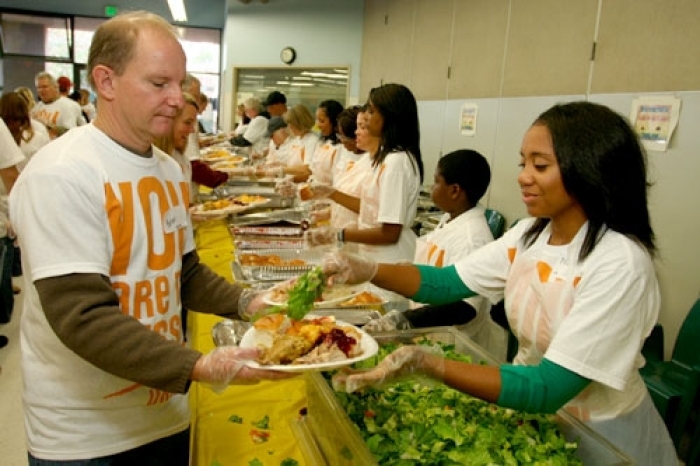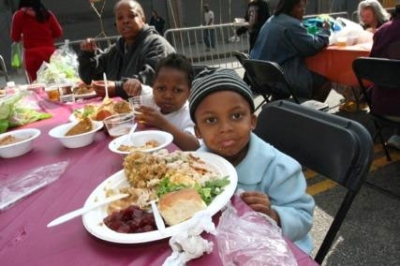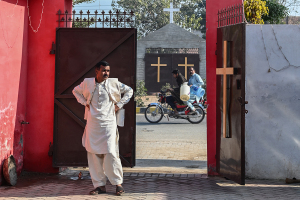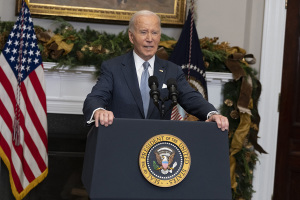Homeless in the Winter: How Christian Ministries Nationwide Are a Place of Refuge From the Cold

Mary Jo Copeland will be cooking up a storm this Thanksgiving. Her guest list will include 400-500 people from Mary's Place, the transitional housing community she has helped run for over 30 years, as well as their neighbors and anyone else down on their luck.
Located in Minneapolis, Minnesota, Mary's Place is a Christian housing community of 92 furnished apartments named for the Blessed Virgin Mary. Guests at the shelter stay for an average of three to six months and during their stay they each get three meals a day. Thanksgiving, however, is the day for Mary to go all out. She puts flowers on the tables, plays music and invites her guests to dance. Mary Jo said cooking a huge Thanksgiving feast and providing transitional shelter for struggling individuals and families is part of her faith.
"They are going through a hard time and they are really trying to get on their feet," she said.
"Devotion to God requires we take care of His people."
Transitional housing complexes like Mary's Place and temporary shelters across the country are more likely to reach maximum occupancy during cold winter months. Winter's biting cold and gusty winds drive needy Americans into emergency overnight housing, leaving shelters scrambling to provide basic necessities like food, clothing and toiletries to the less fortunate.
According to the National Alliance to End Homelessness, an estimated 610,042 Americans are homeless on any given night. Andy Bales, the spokesperson at Union Rescue Mission in Los Angeles, says he has noticed two changes where he works on Skid Row, the downtown stretch that contains one of the largest population of homeless people in the United States. Bales said there has been an increase in the number of people seeking help, and their physical and mental conditions have deteriorated compared to families who have sought help in previous years. The ethnic make up of impoverished families and individuals has changed too. Bales says Asian men, a demographic that was rarely seen on Skid Row, are now a constant presence.
"It has to be something in our society," Bales said. "Family breakdown, unemployment, mental illness. We see a lot of those, and the families that come seem to need more help."

Skid Row, a downtown Los Angeles neighborhood of less than five square miles is home to an estimated 2,000 people who spend their days and nights in the streets according to Bales. The mission serves about 800 people during the year but this number increases during the winter months.
Bales said the shelter provides different levels of care from addiction counseling to basic necessities and spiritual nourishment. Guests also receive assistance with finding work and permanent housing.
"Homeless people are not any different from any one of us," he said. "They are human beings just like any one of us. They may have addictions or mental illnesses but they are
just like us."
Christian groups like Mary's Place and URM supplement housing in cities and towns where the need for emergency shelter sometimes far exceed supply. In Washington, D.C., the mayor's 2012 winter plan, a preemptive strike against winter's bite, running from Nov. 1 until March 31, will include mobile canteens, warming stations and extended stays at shelters across the nation's capital.
Homeless individuals may also catch a ride to any of the area shelters once temperatures dip below freezing and the city has activated its hypothermia alert. According to the preparedness plan, D.C activated the alert a total of 95 days during a winter lasting 151 days. Leslie Hall, the development coordinator at Sasha Bruce Youthwork Washington, D.C. is anticipating at least 50 or 60 young people to walk into the Bruce House shelter. He says the number has increased over the years and so has the need for food, coats and blankets.
"The economy has slowed down and parents are not able to afford food for their kids," he said. "These kids are not getting enough to eat."
One of the ways Christians can help solve homelessness, according to URM, is by opening an emergency or year-round shelter in their churches or faith communities and by challenging these groups to provide assistance to needy family in their area. The Los Angeles-based ministry challenges people to "stop looking away" when they encounter homelessness, saying Christ issued a call to action to all believers and small steps like mentoring a family in need can go a long way toward solving homelessness.





























